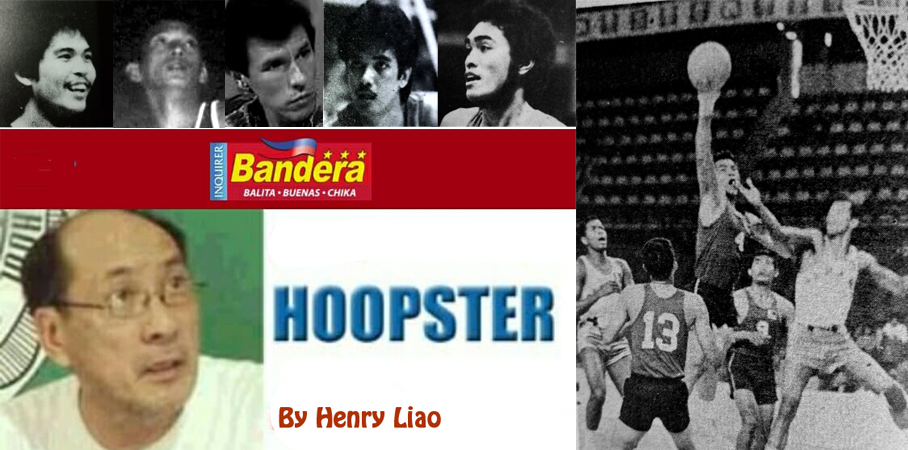
The game being the national pastime of many Filipinos, it is no small wonder that there have been many prominent athletes in local basketball history, whether it be in the collegiate, amateur/professional ranks or international competitions, since the sport was invented by Canadian James Naismith in Springfield, Massachusetts in December 1898.
With the community home quarantine throughout Metro Manila and Luzon in effect since March 15, we simply have had so much time to do some research on the subject.
Join me then in this test of wits to find the identity of some of the prominent Filipino roundballers from the past.
THE QUIZ PART 5
41. “The Big Difference” Carlos (Caloy) Loyzaga, who arguably is the greatest player in local cage history, produced a pair of sons that played in Asia’s first pro league in Joaquin (Chito) Loyzaga and Ernesto (Joey) Loyzaga.
But Caloy, a veteran of 10 international tournaments during his distinguished career (including a 6-0 title record at the Asian level and a bronze medalist during the 1954 World Basketball Championship in Rio de Janeiro, Brazil), retired in 1964 – 11 years before the PBA first saw the light of day in 1975.
Then again, there have been two sets of a father-two sons combination in PBA history.
Strongman Alvin Teng, monikered “Robocop” for his tenacious defensive skills, sent two of his sons to the PBA, namely Jeric Allen Teng and Jeron Alvin Teng (still active).
But the distinction of being the first to accomplish such a feat does not belong to the Tengs.
One other set beat them to the punch (by a year).
The father was a former King Cardinal at Mapua Tech and performed with Great Taste for six seasons (1981-86).
By 2017, his two sons had already suited up in the PBA. Ironically, both saw action with Xavier School in the HS-level Tiong Lian league.
Later, one matriculated at La Salle in college and the other was recruited to play for the Ateneo Eaglets in the UAAP even before he had completed his high school stint with the XS Golden Stallions Aspirants team in the MMTLBA. In 2017, one was in his second season at GlobalPort while the other was a rookie with Blackwater.
What are the names of the father and his two sons?
Dad’s initials are JB. The sons initial are GB and RB.

42. This obscure player was a member of the Philippine national team that topped the 1st Asian Basketball Confederation tournament (now known as FIBA Asia Championship) in Manila in 1960 with a perfect 9-0 record.
This man later coached the San Beda Red Lions in the NCAA in the mid-1960s.
Sure you know the all-time cage greats out there but who is the guy sitting second from right in the photo?What is his name?
Clue: His nickname is “Tata.” And his initials are NC.
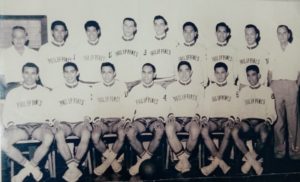
43. This burly 6-2 center out of San Beda College was a very sturdy player around the paint with his bulldozing acts.
The Pasig City native suited up for Ysmael Steel and Meralco in the old MICAA then hooked up with the Toyota Comets in the PBA in 1975. The next year, he joined the Noritake Porcelain Makers. He was back with the Toyota Tamaraws in 1977 for just two games before calling it quits. In three seasons (1975-77), the player with the moniker “Big Boy” hit at a pedestrian 5.3-point clip in 68 appearances.
This wide-bodied fella donned the Philippine national colors on nine occasions – just one less that the number of international stints by the legendary Carlos Loyzaga.
He performed in the 1962 Asian Games in Jakarta, 1963 ABC tournament in Taipei, 1965 ABC tournament in Kuala Lumpur, 1966 Asian Games in Bangkok, 1967 ABC tournament in Seoul, 1968 Mexico Olympics, 1970 Asian Games in Bangkok, 1971 ABC tournament in Tokyo, and 1973 ABC tournament in Manila. He earned a gold medal in the 1962 AG and in the 1963, 1967 and 1973 ABC competitions.
Forget him not.
Who is he?
His initials are AR.

44. This 5-4 playmaker spent his collegiate years in the 1960s with the University of the East, winning three UAAP titles in as many seasons (1966-68). A crowd-drawer with his razzle-dazzle moves and blinding speed, the native of Valenzuela (then a part of Bulacan) was good in squeezing his way to the basket for jackknife layups with two hands.
Along with UAAP stars Robert Jaworski and Danilo Florencio, he suited up for the Philippine team to the 1967 World Universiade in Tokyo.
At his prime, this cat-quick playmaker was a vital cog for Crispa in the old MICAA during the late 1960s early 1970s but was a far cry from his old self when he turned pro in 1975 with the Universal Textiles Weavers in the PBA.
Following another season with the Concepcion Fiberlites, he hung up his jersey. He averaged 9.2 points in just 42 games.
Habahaba he was monikered.
Who is he?
His initials are VA.
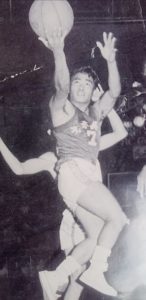
45. Hoop fans find him scary and that’s why he changed his surname legally.
A native of Triple, Bohol, this 5-11 guard was one of the best players from the Southwestern University Cobras factory to migrate to the Big City.
His speciality being interceptions and passing, this court hustler suited up for Cebu-based Mama’s Love in the old MICAA before being absorbed by Mariwasa Noritake when it entered the PBA in 1975.
However, hoots soon greeted the aggressive ballhawker’s entry into the hardwood not because of his unpopularity but because his surname sounded too much like the notorious Romanian Count Dracula from Translyvania.
The teasing and unfair heckling from the gallery never stopped until he legally changed his family name during his final PBA campaign in 1981 with the CDCP Builders.
Hoop fans were surprised when they saw the crafty fireball sporting a new name at the back of his jersey.
With Mariwasa Noritake Porcelain Makers/Honda Hagibis (four seasons), Gilbey’s Gin Gins (two seasons) and CDCP Builders (one season) from 1975-81, he normed 7.2 points in 232 games in the PBA.
What is his name?
His initials are LD.
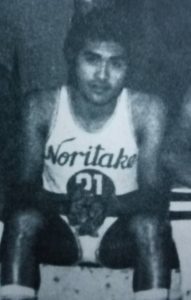
46. This 5-9 player from the early 1970s was one of the most wily playmakers and potent offensive sparkplugs in the history of the Colegio de San Juan de Letran program.
He poured in 52 points for the Letran Knights in one game in the 1972 NCAA tournament – the highest in NCAA seniors history at the time until La Salle’s prolific point-producer Lim Eng Beng racked up 55 against Letran and 54 against Trinity College (now Trinity University of Asia) during the Green Archers’ 1974 championship campaign when this guy was already plying his trade with the U-Tex in the old MICAA.
This Makati-born guard played his entire seven-year (75-81) pro career in the PBA with the U-Tex Weavers/Wranglers and compiled a 7.7-point average in 218 games.
Unforeseen by hoopsters, Lim and this mestizo-looking fella would down the road play together for the Universal Textiles in the pros.
Who is he?
His initials are RP.

47. This 5-11 forward is one of the most prominent athletes in Jose Rizal College (now University) annals.
He suited up for the JRC Juniors and Seniors teams during the late 1960s and early 1970s.
Perhaps his most memorable collegiate game came on October 20, 1974 (a Sunday) when he scored the game’s winning twinner in the Heavy Bombers’ 72-71 upset of eventual chanpion De La Salle (led by Lim Eng Beng) in the second round of the 1974 NCAA tournament that broke the Green Archers’ 10-game win streak.
It turned out to be La Salle’s lone defeat in a 15-1 season.
The JRC victory forced a three-way tie in the second-round race among first-round leader La Salle, Ateneo and JRC with identical records. The Heavy Bombers eventually lost to La Salle, 90-82, and Ateneo, 87-82, that set up a second-round title match between the Green Archers and Blue Eagles that La Salle took, 90-80, for a two-round sweep and the 1974 NCAA crown outright.
The Heavy Bombers settled for second place and their offensive top gun eventually suited up for Villar Records in the amateur league for four years.
With his feathery, often unstoppable outside shot, he donned the national colors in the Southeast Asian Games and the ABC tournament in 1977.
This fella turned pro in 1978 and joined the PBA with the Filmanbank Bankers coached by all-time great Lauro Mumar. He hit a four-year PBA career high of 16.1 ppg in 40 games in his second year with the Bankers.
In 1980, this rifleman latched on with the Galleon Shippers where he also performed in the back court and normed 13.25 ppg in the All-Filipino Conference, way above his season norm of 10.4 ppg.
Thereafter, he joined the St. George Whiskey (the forerunner of Gilbey’s Gin) in his final PBA season and wound up as the top local scorer for the Whiskies with a 13.2-point clip in 30 assignments.
For whatever its worth, he averaged at least 10 points in each of his four PBA seasons and wound up with a 12.95-career clip in 121 games. His career high of 34 points came in a St. George uniform in his final 1981 campaign.
In photo, this JRC Heavy Bomber prevents La Salle’s William Johnston from snaring the rock.
Does anyone remember him?
His initials are AL.
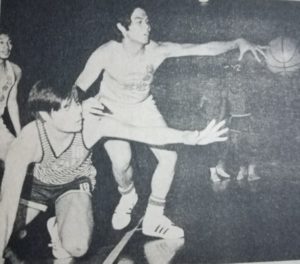
48. He is a jack-of-all trades guy – a former athlete, comedic actor, a former head coach, a consummate politician, and now an opinionated TV broadcaster with a sports program.
Now deep into his late 70s, he continues to be the epitome of an honorable elder statesman with muscle-bound, well-toned body frame.
Loyalty was this ace 5-11 playmaker’s calling card. A product of San Beda College at the elementary level and a portion of high school before matriculating at the Colegio de San Juan de Letran, this Cubao, Quezon City native spent his entire roundball career – MICAA and PBA – with the Don Manolo Elizalde-owned Yco Painters/Tanduay Distillers franchise from the 1960s to the late 1970s.
Owner of 25-percent of English blood, this player with extraordinary speed, court smarts and mestizo good looks was the last prominent Yco player from the 1962 team to turn pro in the PBA in 1976.
By the time this speedy player whom legendary sportscaster par excellence Willie Hernandez described as “mas mabilis pa kaysa sa metro ng taksi” hung up his jersey following three PBA seasons (1976-78, 12.6 ppg in 124 games) with Tanduay Distillers/ESQs, he was already moonlighting into the TV entertainment world with the top-rating but naughty program “Chick to Chicks” as the love interest of comedian Nova Villa.
While he later went into pro coaching the Tanduay and Shell franchises in the PBA, this guy also joined the world of local and national politics and won several times. First, he served as a councilor in Pasay City as a congressman in Paranaque City before gaining a Senate berth – one of only three former cage athletes in local politics history to become a senator – the others being Ambrosio Padilla (Philippine team captain during the 1936 Berlin Olympics) and Robert (Sonny) Jaworski.
He donned the national colors twice – the 1970 Asian Games in Bangkok, the 1969 ABC tournament in Bangkok, 1971 ABC competition in Tokyo, and the crown jewel of his illustrious cage tenure, the 1972 Summer Olympics in
Munich, Germany.
What is his name?
His initials are FW.

49. This neat-looking, well-groomed player from Zamboanga City was a product of the University of the Visayas Green Lancersin the early 1950s before migrating to the Big City.
The 6-1 guard-forward made his name in the old MICAA with the powerhouses Ysmael Steel Admirals and Meralco Reddy Kilowatts.
He was so good that he was voted MICAA Most Valuable Player in 1958 with the Admirals and named Mr. Basketball by the Philippine Sportswriters Association (PSA) in the same year.
He was a national team selection in nine international stints – 1959 Santiago, Chile World Basketball championship, 1960 Rome, Italy Summer Olympics, 1960 Manila ABC tournament (gold), 1962 Jakarta Asian Games (gold), 1963 Taipei ABC tournament (gold), 1964 pre-Olympic qualifying tournament, 1965 ABC tournament, 1966 Bangkok Asian Games and 1968 Mexico Summer Olympics.
In retirement following two seasons (1976-77) with the Mariwasa Noritake franchise in the PBA, he became a Meralco branch manager in various areas (including Roosevelt QC branch), becoming a supervisor for accounting and government accounts.
He also tried his luck in coaching, albeit with limited success, spending time with ER Squibb in the MICAA and CFC Presto in the PBA.
What’s his name?
His initials are AM.
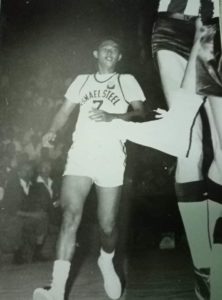
50. He was a “policeman” on the hardcourt, among the first batch of “enforcers” in Philippine basketball history and played in the UAAP with the University of Santo Tomas in 1959 (a title) and Far Eastern University in 1960.
During his heyday as a player, this pesky, tenacious defender from the backcourt, who spent his high school days at Mapua Tech in the NCAA before moving over to Far Eastern University in the UAAP for his collegiate studies made life hard for the opposition with his leech-like guarding that sometimes border on roughness.
But his hard work on defense eventually paid off as he earned him kudos when he joined Ysmael Steel in the old MICAA and earned a berth on the Philippine national team on four occasions in the 1960s and early 1970s.
He played in 1962 Jakarta Asian Games (gold), 1963 Taipei ABC tournament (gold), 1965 Kuala Lumpur ABC tournament and 1970 Bangkok Asian Games.
True to his calling, he gained employment as a policeman in Manila upon his retirement in the early 1960s.
What is his name?
His initials are MJ.
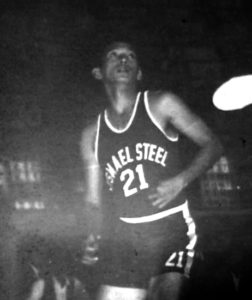
* * * * *
THE ANSWERS: 41. Joel Banal. Sons Gabriel (Gabby) Banal and Raphael (Ael) Banal; 42. Nicolas (Tata) Carranceja; 43. Alberto (Big Boy) Reynoso; 44. Virgilio (Billy) Abarrientos; 45. Lucrecio Dator (formerly Dacula); 46. Ricardo (Ricky) Pineda; 47. Angelito (Amang) Ladores; 48. Freddie Webb; 49. Alfonso (Pons) Marquez; and 50. Manuel (Manny) Jocson.
Disclaimer: The comments uploaded on this site do not necessarily represent or reflect the views of management and owner of Bandera. We reserve the right to exclude comments that we deem to be inconsistent with our editorial standards.


